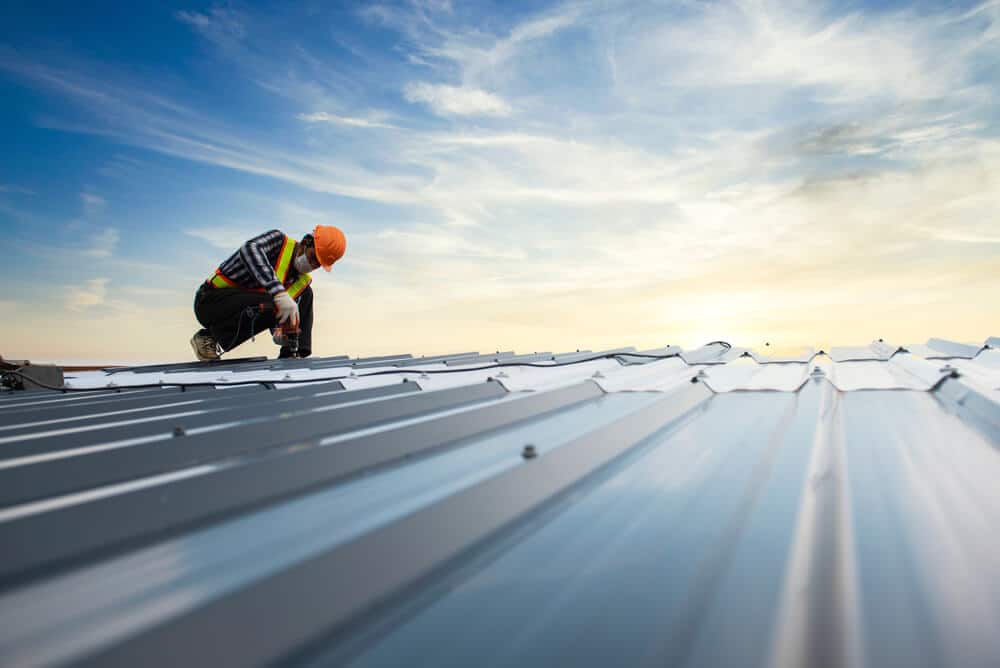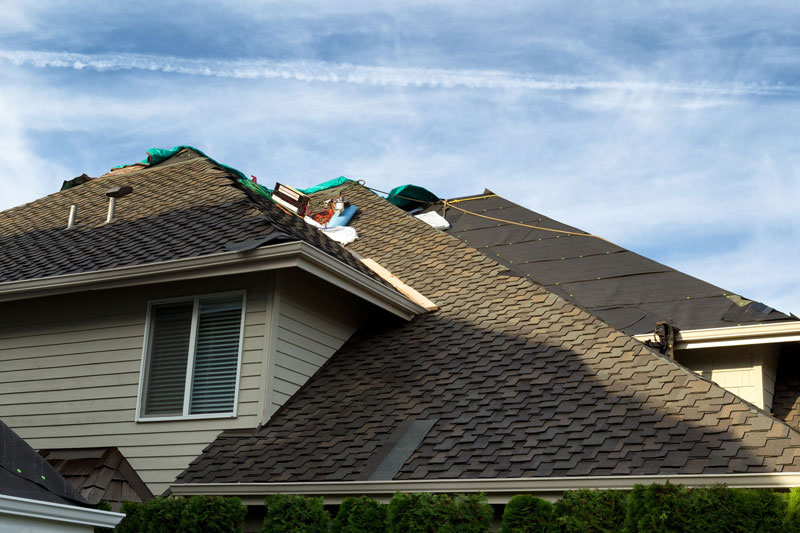Roof Replacement: Expert Services for a Durable Roof
Assessing the very best Roof Materials for Substitute: An In-depth Analysis of Resilience, Cost, and Aesthetic Charm
Choosing the appropriate roof covering material for substitute includes a cautious analysis of a number of essential factors, consisting of resilience, expense, and aesthetic allure. Each alternative offers distinct benefits and downsides; for circumstances, asphalt tiles are budget-friendly yet shorter-lived, while metal roofing systems assure durability at a higher financial investment. The aesthetic effect of products like clay tiles can not be forgotten, in spite of their premium price factor. Recognizing exactly how these elements interact can dramatically influence the decision-making process. As we check out these facets further, the implications for your certain scenario come to be increasingly essential.
Review of Roof Covering Materials
As property owners significantly prioritize toughness and power performance, understanding the various roof covering products available for substitute comes to be crucial. The choice of roofing products straight influences not just the visual charm of a home however also its long-term efficiency and maintenance costs.
Amongst the most usual roof products are asphalt roof shingles, metal roof, and tile. Asphalt roof shingles are favored for their affordability and convenience of installation, making them a popular selection for lots of property applications. Metal roofing, that includes products such as steel and light weight aluminum, supplies extraordinary durability and energy efficiency, frequently reflecting heat and minimizing cooling expenses. Floor tile roof covering, often made from clay or concrete, is treasured for its durability and aesthetic appeal, providing a distinctive look that can enhance a home's value.
Additionally, newer materials such as artificial shingles and eco-friendly roof covering systems are obtaining traction. Artificial alternatives mimic conventional materials while offering improved longevity and reduced maintenance requirements. Eco-friendly roofings, which include vegetation, add to power efficiency and biodiversity.
Toughness Assessment
When examining roof covering products for substitute, durability is an essential element that property owners have to consider. The lifespan and durability of roofing products straight affect long-lasting maintenance and replacement costs. Numerous products display differing levels of resilience, making it important to understand their performance under ecological stressors.
Asphalt shingles, while popular for their cost-effectiveness, typically last 15 to 30 years and might call for even more constant substitute as a result of deterioration from UV direct exposure and severe climate. On the other hand, steel roof covering offers amazing sturdiness, with a life expectancy of 40 to 70 years and resistance to wind, fire, and bugs. Additionally, clay and concrete tiles can withstand severe conditions, usually lasting longer than 50 years, although their weight necessitates a durable structural assistance system.

Expense Contrast
Thinking about the monetary ramifications of roof covering products is crucial for property owners preparing a substitute. The price of roofing materials can vary substantially based on elements such as material type, installment complexity, and local pricing differences.
Asphalt tiles are among one of the most cost-effective alternatives, generally ranging from $90 to $100 per square (100 square feet), making them a popular choice for budget-conscious home owners. In contrast, metal roof covering can cost in between $250 and $700 per square, depending upon the kind of steel and finish selected. While metal roof coverings have a tendency best site to have a higher in advance cost, their longevity and energy efficiency may result in cost savings in time.
Clay and concrete tiles are also on the greater end of the spectrum, balancing in between $300 and $600 per square. These products use durability and visual charm this contact form but require a significant first investment.
Finally, slate roofing, known for its remarkable toughness and timeless look, can range from $600 to $1,500 per square, making it one of the most costly option. Homeowners have to weigh the initial prices against the anticipated lifespan and upkeep requirements of each product to make an educated decision.
Aesthetic Factors To Consider
Aesthetic considerations play an important duty in selecting roof covering products, as the roofing system significantly influences a home's general look and visual allure. Property owners often look for products that complement their building style and enhance the aesthetic allure of their home. The color, texture, and account of roofing products can significantly influence the general aesthetic.
Materials such as asphalt shingles use a selection of colors and styles, making them a prominent selection for property jobs. On the other hand, metal roof gives a sleek, contemporary appearance and is available in numerous finishes that can match modern designs. Typical choices like clay floor tiles or slate can stimulate a classic elegance, interesting those that prefer traditional appearances.
Additionally, the assimilation of roof covering materials with bordering elements, such as house siding and landscaping, is vital. A cohesive color scheme and harmonious textures can raise a home's outside and add to its value. Homeowners should also think about exactly how the chosen roofing material connects with natural light, as this can impact the roof covering's look throughout the day. Ultimately, picking visually pleasing roof covering products requires cautious consideration of personal taste, architectural design, and the general vision for the home.
Final Suggestions
Picking the best roof material can significantly enhance a home's longevity and aesthetic charm. roofer. Based on our analysis of durability, expense, and aesthetic elements, we advise three main options for home owners taking into consideration a roof substitute
To start with, asphalt tiles continue to be one of the most prominent option as a result of their cost and flexibility. They offer a great equilibrium of cost-effectiveness and defense, making check it out them excellent for many residential applications. However, property owners ought to consider their long life, as they typically last 15 to thirty years.

Last but not least, for those looking for a high end visual, slate or tile roof uses unequaled elegance and longevity. These products come with a high cost tag, their lifespan can go beyond 100 years, making them a worthy financial investment for high-end homes.
Ultimately, the ideal option will certainly depend upon individual budget plan, aesthetic choices, and regional climate factors to consider. House owners must consult with a roof specialist to evaluate their certain demands.
Conclusion
To conclude, selecting the suitable roof covering material requires a mindful evaluation of toughness, cost, and aesthetic allure. Asphalt shingles give an economical option with moderate durability, while metal roof covering stands out in toughness and power efficiency. Clay and concrete tiles, although more expensive, substantially boost aesthetic allure and withstand severe weather conditions. Ultimately, the decision should align with individual budgets, design preferences, and local climate factors, emphasizing the importance of professional examination for educated selections.